Most of the time people end up purchasing a racquet which is unsuitable for their level of play. It’s not because they don’t have anything to do with their money but it’s as a result of wrong ingestion of information. You’ve found yourself at the right place if you want to know how to choose a racquet because I’ve been in that place before.
Irrespective of your level or the level you’re dreaming to be, the kind of tennis racquet you wield in your game influences your results. Therefore, it’s worth researching the right racquet if you play tennis in any capacity because all tennis racquets are differently made. They all have good and bad sides which you must know before you make a purchase.
It’s my desire to share with you what I’ve gathered during my search to help you get one that you would love to play with. So, do get along because the kind of racquet you end up with, contributes to your style of play and performance.
What is Your Playing Level?
Besides your stature, the starting point in making the right choice is knowing your level or rating. If you’re not sure of your level, then you can use the United States Tennis Association rating system. Find it here.
In the National Tennis Rating Program (NTRP) under the association, beginner, intermediate and advanced level players are rated as NTRP 1.0 – 2.5, NTRP 3.0 – 4.5 and NTRP 4.5 – 7.0 respectively.
Beginner
If you’re at this level, you’ll want a racquet that will help you to be consistent in the fundamental techniques of getting the ball into the court. In this regard, a larger head size will be suitable to provide you with a bigger area where you can get maximum response from the racquet. Also, the larger head size enables you to generate more power enough for you to maintain the consistency in your fundamentals.
Among the several options available, you can start with the following racquets: Babolat Aero 112 Strung, Babolat Pure Drive 107, Babolat Pure Drive 110, Head Graphene Touch Instinct PWR Racquet, Wilson Burn 100 LS CAMO, Wilson Ultra 110 Racquet, Wilson Ultra 110, Wilson Hyper Hammer 5.3 Stretch OS Racquets and Wilson Hyper Hammer 5.3 Stretch OS.
Intermediate
At this level, you have a good amount of experience for all-around playability and that you’ll want a racquet that will enable you to intensify your secret weapon of throwing off your opponent. This could be magnifying your forehand, backhand, spin creation or serve.
The racquets I would suggest starting off your test with are Babolat Pure Aero Lite, Babolat Pure Aero, Babolat Pure Drive, Babolat Pure Strike 98 18×2, Head MicroGEL Radical Midplus, Head Graphene Touch Instinct MP, Prince Textreme Tour 100P, Prince Textreme Tour 95 and Wilson Blade 98 (16×19) Countervail.
Advanced
With your extensive experience from competitive games, you’ll want a racquet that will give you the flexibility of deciding when to hit the ball hard or when to be easy on the ball with consistency without sacrificing power. Your target is to get a string that will magnify your strength and normally, smaller head size is preferred.
I think starting with these racquets will be helpful: Babolat Pure Aero VS Tour, Babolat Pure Strike VS Tour, Volkl V-Sense 10 Mid, Wilson Pro Staff RF97 Autograph Black, Prince Textreme Tour 95 and Babolat Pure Aero Tour.
How Do I Choose Then? The Guide
Having known your level of play and the kind of properties you should expect, the following titbits will enable you to nail it down to the right racquet that will give you what you need.
1. Know the category of the racquet that meets your performance expectation
Whether you’re changing your current racquet or making a purchase for the first time, you should have a basis to make a choice of the kind of the tennis racquet you want. It could be that you’re seeking a perfect blend of power, control, comfort or varying degrees of these three. In any case, these three main categories should help you out:
Game Improvement or Power Racquets: These racquets are mostly for players at the beginning level and intermediate level who seek power and want to polish up their discovered area of strengths as well as improving their weak spots. They are usually lightweight with bigger heads and longer overall length with evenly distributed weight at the hitting surface.
Examples of racquets to start with are Babolat Pure Drive 110, Wilson Triad XP5, Head MxG 5 and Volkl V-Sense 1.
Tweener Racquets: They are mostly lighter weight racquets of well-balanced feature suitable for intermediate and advanced players. It provides a perfect blend of control and power with improved manoeuvrability due to its extended length.
Some examples of these racquets are Babolat Pure Drive, Prince Textreme Warrior 100, Wilson Ultra 100, Head Graphene Touch Extreme MP and Yonex EZONE 100 (300g).
Control Racquets: They are normally heavyweight racquets with smaller heads of exceptional control at the expense of power. Professional and top-level players wield these racquets as they generate their own power.
Some examples: Volkl V-Sense 10 Mid, Prince Phantom Pro 100P, Wilson Pro Staff RF97 Autograph Black and Yonex VCORE Pro 97 (330).
2. Choose head size depending on the level of power you want.
The larger the head of the racquet, the greater the power one can generate and the lesser the control. If you’re a beginner or intermediate player, a larger head size is required since that provide you with a larger hitting area to enable consistent hitting at the centre.
For advanced players, small head size is ideal to provide you with maximum control. The current range of racquet head size is 85 to 135 square inches.
3. Decide on the length that will provide you with a better manoeuverability
The allowable range of racquet length specified by the ruling bodies of the professional tournament is 27-29 inches. The standard or traditional length of racquet normally used is 27 inches long. In terms of power and manoeuvrability, longer racquet outperforms the traditional length racquets. For beginners and intermediate players, the standard length is ideal.
4. Choose a weight that gives you a better feel of the racquet
The way a racquet feels in your hand is dependent on its weight. And feel is mostly associated with vibrations generated in your hands upon ball impact on the racquet. Heavier racquets generate more power with minimum shock transmission whereas lighter weight provides you with better manoeuvrability.
The weight and balance of racquets can be categorized into:
- Heavier, head-light racquets: heavy handle with a lighter head which is good for generating more control.
- Lightweight, head-heavy racquets: lighter handle with a heavy head which is very good for manoeuvrability.
5. How Stiff do you want the frame of the racquet to be?
Stiffness is referred to as the degree or level of racquet frame deflection upon direct contact with the ball. You must be duly diligent in settling on the stiffness level because it affects your power, control, comfort and spin generation.
The lesser the racquet frame bend (stiffer), the more power the return ball goes with due to less absorption of energy by the racquet. However, more shock will be transmitted to the arm upon ball impact as stiffer frames are a poor absorber of vibrations. Generally, power is inversely related to control. So, when one gets more power control is sacrificed.
Flexible frames which are most preferable to advanced players who generate more power themselves provide better control over their shots. Also, flexible frames provide more spin than stiffer frames because the ball spends a few more seconds on the stringbed. Hence, stiffer frame with less bend on impact is ideal for beginner or intermediate players.
6. Select a string pattern that will add to your performance
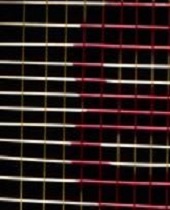 There are two string pattern densities: open and closed string patterns.
There are two string pattern densities: open and closed string patterns.
Open pattern: The string bends more upon ball impact than the denser pattern. This pattern is generally suitable for topspin players because more spin can be generated as the ball stays a little while on the racquet. However, the string may not last long to break due to free movement and abrasion.
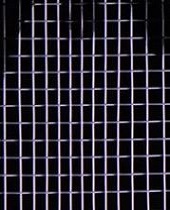 Closed(dense) pattern: The strings are closely spaced to provide improved durability and less deflection upon ball impact. If you hardly hit topspin but seek better control and want your string to last longer, this pattern is your best choice.
Closed(dense) pattern: The strings are closely spaced to provide improved durability and less deflection upon ball impact. If you hardly hit topspin but seek better control and want your string to last longer, this pattern is your best choice.
7. Find Your Grip Size
Your grip size contributes significantly to your play style development and comfort. Too Small or too big grip size requires extra muscle strength to handle the racquet well which consequently leads to tennis elbow issues. If you’re not sure of your grip size, there are two ways to measure it.
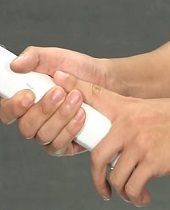 Option I
Option I
Hold out the racquet by eastern forehand grip and use your index finger of the other hand to slide through the space between your ring finger and the palm of your grip. If your index finger fits the space well, that’s your grip size. If there’s no space or space is too much, then it’s either too small or too big grip size.
If you’re to settle between these two sizes, go for the smaller one because you can adjust the grip size with an overgrip tape.
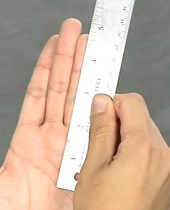 Option II
Option II
The second method is when you’re not with a racquet. Open your palm with your fingers straightened closely together. Then align a straight rule with the starting edge at the centre of your palm and measure to the tip of your ring finger.
Mostly, the grip size of adults is between 4 1/8 inches and 4 5/8 inches with 5 3/8 inches as the most common grip used by players.
Sample Guide in Choosing a Racquet With The Above Method
Level of Play: Beginner
Category of the racquet: Game improvement or power racquet
Head size to try: 106 – 118 square inches
Length of the racquet: Standard adult length of 27 inches
Weight and Balance: Weight of 9-10 oz of lightweight, head-heavy balance racquet.
Stiffness of racquet frame: Stiffer racquet measuring between 65 – 75
Select a string pattern: Dense or closed pattern of about 18×20
Grip Size: Use the first option described above.
Note: When you have nailed down your options with the above method, do a try test on the racquet that qualify these criteria before you finally settle on one. After that, go and rock!
Summary of Facts About Choosing Racquet
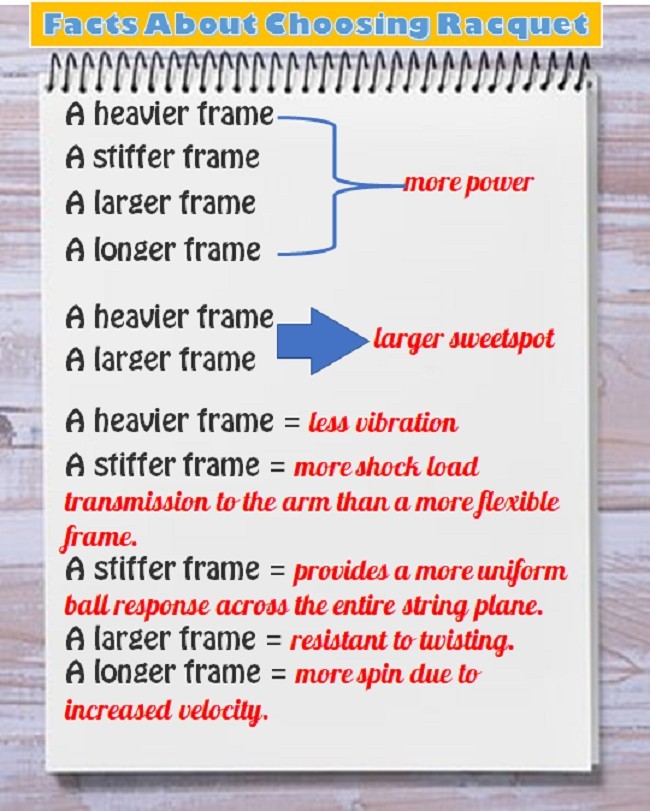
Free Caution!
Do not settle for a less quality racquet or racquet that is not suitable for your level of play because of cost. Choosing a wrong racquet can end you up in tennis injuries such as tennis elbow, arm or shoulder issues.
It’s Your Decision to Make the Choice – Last Words
At this point, you should be confident enough to choose a racquet for your game without anyone compelling you. Choose a racquet that will do the talking in your game because your performance and style of play is dependent on it. You can check the best brands of tennis racquet available on the market to nail down your search of racquet if you need one.
Feel free to share this post with anyone that you think it will be helpful to if it’s a great resource to you. Do well to drop your comment also if I missed something that you think will be good to add or share your experience on how you choose your tennis racquet.
All the Best in your tennis racquet search.
Derrick.
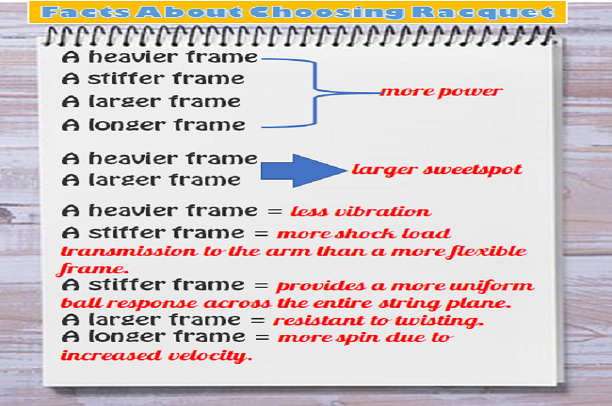

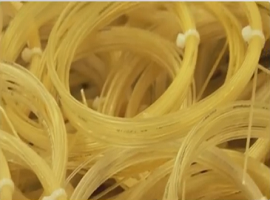 In the
In the 
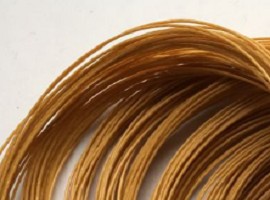 It’s the fastest growing string on the market and has become very popular among ATP players and some WTP players. It’s not known to deliver much power and outstanding feel but its development of co-polyester modules has made improvement in tension maintenance and feel making it less harsh now.
It’s the fastest growing string on the market and has become very popular among ATP players and some WTP players. It’s not known to deliver much power and outstanding feel but its development of co-polyester modules has made improvement in tension maintenance and feel making it less harsh now.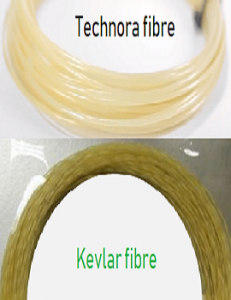 They are strings made from fibres which are more durable, stiffer and provide better control of high tensions on racquets. They are by far stiffer than nylon strings and mostly come as multifilament strings with some amount of nylon embeddings.
They are strings made from fibres which are more durable, stiffer and provide better control of high tensions on racquets. They are by far stiffer than nylon strings and mostly come as multifilament strings with some amount of nylon embeddings.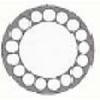
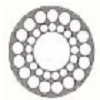 Solid Core with Multiple Wraps: It has a number of wraps around the solid core and offers added property of durability as well as cushioning effect. You get a maximum feel with the racquet when you strike the ball.
Solid Core with Multiple Wraps: It has a number of wraps around the solid core and offers added property of durability as well as cushioning effect. You get a maximum feel with the racquet when you strike the ball. Monofilament Polyester: It’s mostly used for polyester strings and offers a great deal of durability. It’s relatively less stiff than Kevlar constructed string except for its dead feel. It’s recommended for players who break their strings often.
Monofilament Polyester: It’s mostly used for polyester strings and offers a great deal of durability. It’s relatively less stiff than Kevlar constructed string except for its dead feel. It’s recommended for players who break their strings often.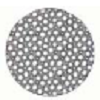 Multifilament with No Wraps: Unlike the solid cores, this has rolls of tiny synthetic fibres clumped together to offer improved cushioning effect. It’s more comfortable than the solid core of nylon. It’s also soft and makes a good choice for players with problems with the arm but can’t afford the natural gut.
Multifilament with No Wraps: Unlike the solid cores, this has rolls of tiny synthetic fibres clumped together to offer improved cushioning effect. It’s more comfortable than the solid core of nylon. It’s also soft and makes a good choice for players with problems with the arm but can’t afford the natural gut.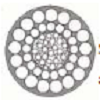 MultiCore with Wraps: It has smaller diameter bundles of microfibre core with one or more outer wraps. It’s not much different from the multifilament (no wraps) except for the improved durability.
MultiCore with Wraps: It has smaller diameter bundles of microfibre core with one or more outer wraps. It’s not much different from the multifilament (no wraps) except for the improved durability. Textured: It has a solid core with wrapping. The only difference is the embedding of filaments in the outer wraps or on the surface of the wraps. This configuration enhances the string’s spin potential.
Textured: It has a solid core with wrapping. The only difference is the embedding of filaments in the outer wraps or on the surface of the wraps. This configuration enhances the string’s spin potential.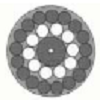 Composites: it’s formed by blending different materials of unique properties together with the aim of maximizing them. It’s to incorporate a uniform mixture exceptional characteristic.
Composites: it’s formed by blending different materials of unique properties together with the aim of maximizing them. It’s to incorporate a uniform mixture exceptional characteristic.

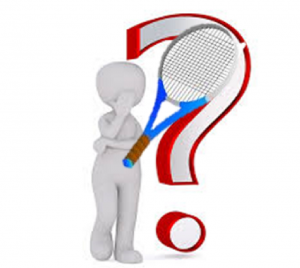 As we seek for
As we seek for  The moment the string is strung, its tension and elasticity begin to reduce. And string’s tension is a determinant on how much power one can generate and control you can have on the ball. So, when these are set on the decrease as you play, your performance reduces. Instead of maximizing your playing style, you begin to cash into other techniques that will enable you to offset the lost properties of the string.
The moment the string is strung, its tension and elasticity begin to reduce. And string’s tension is a determinant on how much power one can generate and control you can have on the ball. So, when these are set on the decrease as you play, your performance reduces. Instead of maximizing your playing style, you begin to cash into other techniques that will enable you to offset the lost properties of the string.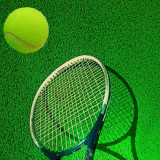


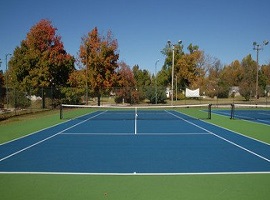
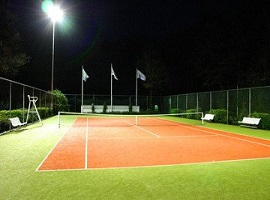
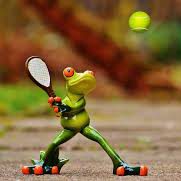 If you are a fun of tennis game, I believe you have had some experience on one or two of these types. Was the feeling the same? I remember my experience when I first played on a hard court after several training on clay tennis court. I was kind of disappointed in myself because I couldn’t really flow well for the few hours. It took me some time to get accustomed to it before I could play a smooth game. So the feeling is not the same in my opinion.
If you are a fun of tennis game, I believe you have had some experience on one or two of these types. Was the feeling the same? I remember my experience when I first played on a hard court after several training on clay tennis court. I was kind of disappointed in myself because I couldn’t really flow well for the few hours. It took me some time to get accustomed to it before I could play a smooth game. So the feeling is not the same in my opinion.